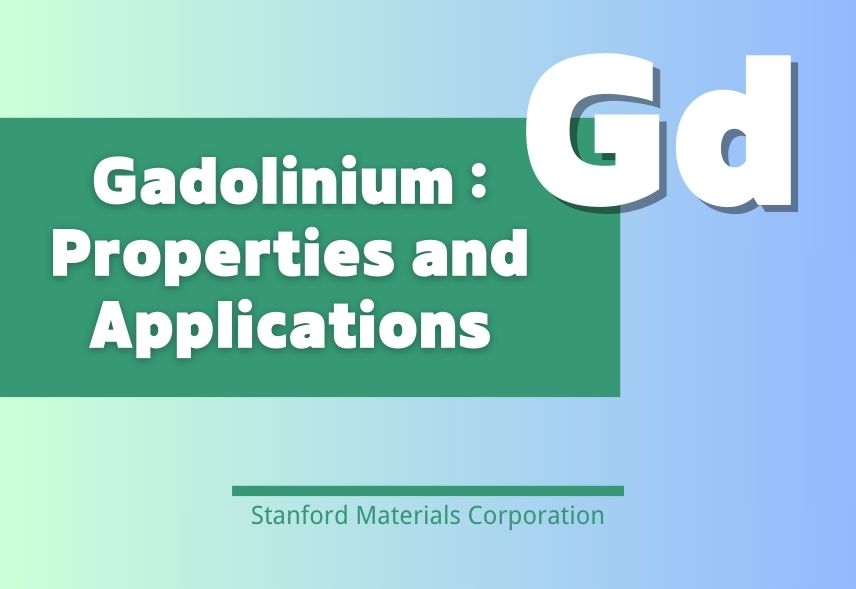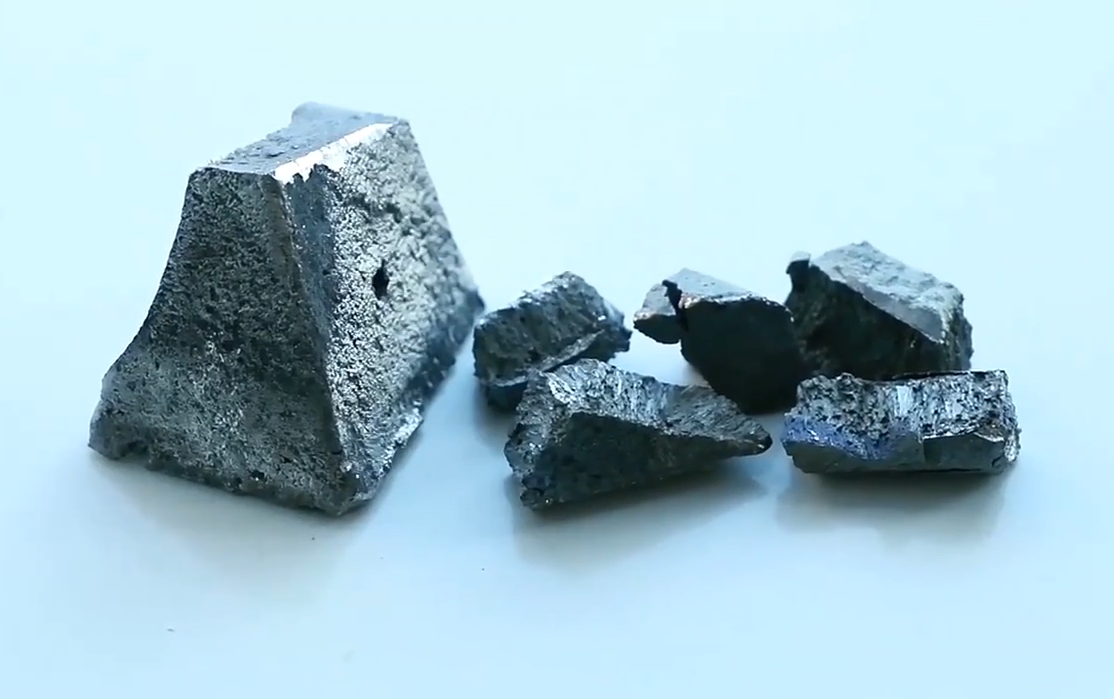
Gadolinium (Gd) is a rare-earth element with the atomic number 64. It is known for its unique physical and chemical properties, making it an essential component in various advanced technologies. Gadolinium is widely used in fields such as medical imaging, nuclear technology, materials science, and electronics. This article will introduce the properties of gadolinium, its popular compounds, key applications, and safety considerations, providing an in-depth look at its role in modern science and industry.
Physical Properties
Gadolinium is a silvery-white, ductile metal. It has a high density of 7.90 g/cm³ and a relatively high melting point of 1313°C, along with a boiling point of 3266°C. Gadolinium is also known for its excellent thermal and electrical conductivity, making it useful in various high-performance applications.
Magnetic Properties
One of the most fascinating features of gadolinium is its magnetic behavior. At low temperatures, gadolinium exhibits ferromagnetism, meaning it becomes magnetized. However, at higher temperatures, it transitions to paramagnetism, where it only shows magnetic behavior in the presence of an external magnetic field. This unique magnetic property makes gadolinium a vital material for research in magnetic and low-temperature physics.
Reactivity
Gadolinium is reactive in the presence of air and water. It readily forms an oxide layer when exposed to oxygen in the air, which provides a protective coating. When in contact with water, gadolinium reacts to form gadolinium hydroxide (Gd(OH)₃), which can be dissolved in acids to produce soluble gadolinium salts.
Crystal Structure
Gadolinium has a hexagonal close-packed (hcp) crystal structure at room temperature. This structure allows the metal to exhibit high thermal conductivity and strength, making it ideal for use in demanding industrial applications.
Gadolinium Oxide (Gd₂O₃): This is one of the most common gadolinium compounds. Gadolinium oxide is primarily used in the production of high-temperature alloys, phosphors for color television tubes and fluorescent lamps, and in advanced ceramics. It is also used in some laser technologies due to its optical properties.
Gadolinium Sulfide (Gd₂S₃): Gadolinium sulfide is used in infrared detectors and electronic components. It can absorb infrared radiation, making it valuable in optical applications, especially in sensors and detectors.
Gadolinium Chloride (GdCl₃): Gadolinium chloride is widely used in nuclear technology. It is an effective neutron absorber and is utilized in control rods and neutron shielding in nuclear reactors. It plays a crucial role in regulating the rate of nuclear reactions and ensuring the safe operation of reactors.
Gadolinium Phosphates (GdPO₄, Gd(OH)₃): These compounds are used in water treatment processes and as contrast agents in medical diagnostics. They are effective in removing impurities from water and are also used in Magnetic Resonance Imaging (MRI) to enhance the visibility of soft tissues in scans.
Gadolinium-Ferrite Alloys: These alloys are used in magnetic refrigeration technology, which operates on the principle of the magnetocaloric effect. They are also utilized in producing high-performance magnetic materials for data storage and other electronic devices.
Medical Applications
Gadolinium is important in medical imaging, particularly as a contrast agent in Magnetic Resonance Imaging (MRI). It enhances the clarity of MRI scans, making it easier for healthcare professionals to identify abnormalities in soft tissues. Additionally, gadolinium compounds are also used in radiotherapy to treat cancer, where they help in improving the targeting of radiation.
Nuclear Technology
In nuclear reactors, gadolinium is employed as a neutron-absorbing material. It is used in control rods and as a neutron shield to manage the rate of the nuclear chain reaction, contributing to the safety and efficiency of nuclear power generation.
Materials Science and Electronics
Gadolinium is an essential material for producing high-performance alloys and magnetic materials. Its properties are used in magnetic refrigeration systems, which provide an energy-efficient alternative to conventional cooling technologies. Additionally, gadolinium-based compounds are integral in electronic components, such as sensors and storage devices.
Lighting and Display
Gadolinium compounds, particularly gadolinium phosphates, are used in phosphors for fluorescent lights and displays. These compounds contribute to the brightness and efficiency of various lighting applications, including energy-saving lamps and high-definition television screens.
Research and Development
The unique properties of gadolinium make it a valuable subject for scientific research, especially in materials science, magnetism, and low-temperature physics. Researchers continue to explore new ways to use gadolinium in cutting-edge technologies and innovative applications.
Although gadolinium is not highly toxic, some of its compounds can pose health risks if mishandled. Gadolinium dust and vapors should not be inhaled, and direct contact with skin or eyes should be avoided. Proper safety measures, such as wearing gloves, goggles, and a lab coat, should always be taken when handling gadolinium and its compounds. In industrial and medical settings, it is essential to follow specific guidelines for the safe handling and disposal of gadolinium materials to prevent environmental contamination.
Gadolinium is a versatile and indispensable element with a broad range of applications across various industries. Its unique physical, chemical, and magnetic properties make it a valuable material in fields such as medical imaging, nuclear technology, materials science, and electronics. As research into its properties and applications continues, gadolinium is likely to remain a key component in innovative technologies. By understanding its properties, applications, and safety measures, we can ensure the responsible use and continued advancement of this important rare-earth element.
Stanford Materials Corporation (SMC) provides technical support to help customers follow safety standards when handling, using, and storing gadolinium and its compounds. The company strictly adheres to international safety regulations and industry standards to ensure its products meet both customer needs and environmental and health safety requirements.
Eric Loewen
Eric Loewen graduated from the University of Illinois studying applied chemistry. His educational background gives him a broad base from which to approach many topics. He has been working with topics about advanced materials for over 5 years at Stanford Materials Corporation (SMC). His main purpose in writing these articles is to provide a free, yet quality resource for readers. He welcomes feedback on typos, errors, or differences in opinion that readers come across.

 Inquiry List
Inquiry List



